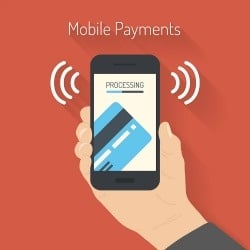The Confusing Mobile Payments Game
 Now that retailers have been ‘encouraged’ to accept chip-and-PIN cards, transactions have become a little more annoying. Until recently we all would have agreed that it was easier to just pull out your card and swipe it. Mobile payment apps actually provide for a marginally faster transaction process than swipe (0.4 seconds faster to be precise) and are a little friendlier. Especially since everyone in the check-out line is staring at their phone anyway! Not to mention the reduced need to carry a wallet.
Now that retailers have been ‘encouraged’ to accept chip-and-PIN cards, transactions have become a little more annoying. Until recently we all would have agreed that it was easier to just pull out your card and swipe it. Mobile payment apps actually provide for a marginally faster transaction process than swipe (0.4 seconds faster to be precise) and are a little friendlier. Especially since everyone in the check-out line is staring at their phone anyway! Not to mention the reduced need to carry a wallet.
Credit unions are bombarded every day with propaganda that indicates mobile is the place to be, and if you don't have a mobile plan, you will not be able to survive in the ‘new economy’. Data however suggests that only about 4% of consumers actually use mobile payments today, and that only 13% of consumers have actually attempted a mobile payment. The early race for mobile payments is all about adoption: The company who wins early adoption stands to be the leader in a potential billion dollar business.
Not to be left out, Chase Bank announced last week that they are joining the mobile payments game with Apple, Google and Samsung in line at the cash register. Chase Bank is certainly not the first but they are arguably the biggest: 1 out of every 2 household’s is a customer – according to Chase. They also claim to be the overall number one payments processor. Chase’s plan is to double-down on ‘reach’, meaning they are partnering up with Wal-Mart and other large retailers to drive mobile app adoption.
Even though they possess ‘size’ and ‘power’, they are also going all-in on confusing. Sounds bank-ish doesn’t it? Chase is creating a digital wallet, Chase Pay. It will work by allowing bank customers to show a code to cashiers that they can scan, but this will not work in all stores (only those where Chase has ‘reach’), and this is where it gets confusing. Some stores will require Chase customers to use a different app, one that is being built by a separate group of retailers. Sounds messy, right? It is. However, Chase plans to cut through the confusion and drive retailer adoption by offering smaller transaction fees to stores that adopt their apps.
So now for the UX (user experience) question. Which of these mobile payment apps should your credit union pursue? The answer may not be which app, instead it might simply be apps – plural. Provide the option(s) that your credit union members want. This begins with listening to what your members are saying about mobile wallets and then paying attention to which types of devices they are using. If a member is curious about a bank's app, such as Chase’s, make sure they are aware that alternatives exist, namely Apple Pay and Android Pay. After all, combined they represent more than 97% of the worldwide smartphone market share (Android 83% and Apple 14%), and in the beginning are sure to have more widespread retail adoption than a single bank.
As for which wallet will win this battle? Easy: The one consumers use. This is where Chase may have it wrong. Lower transaction fees may encourage a retailer to offer a payment solution for the app, but I guarantee that retailers will also be willing to accept payments from a non-Chase customer. As much as retailers are concerned about cost, they are more concerned about sales...


